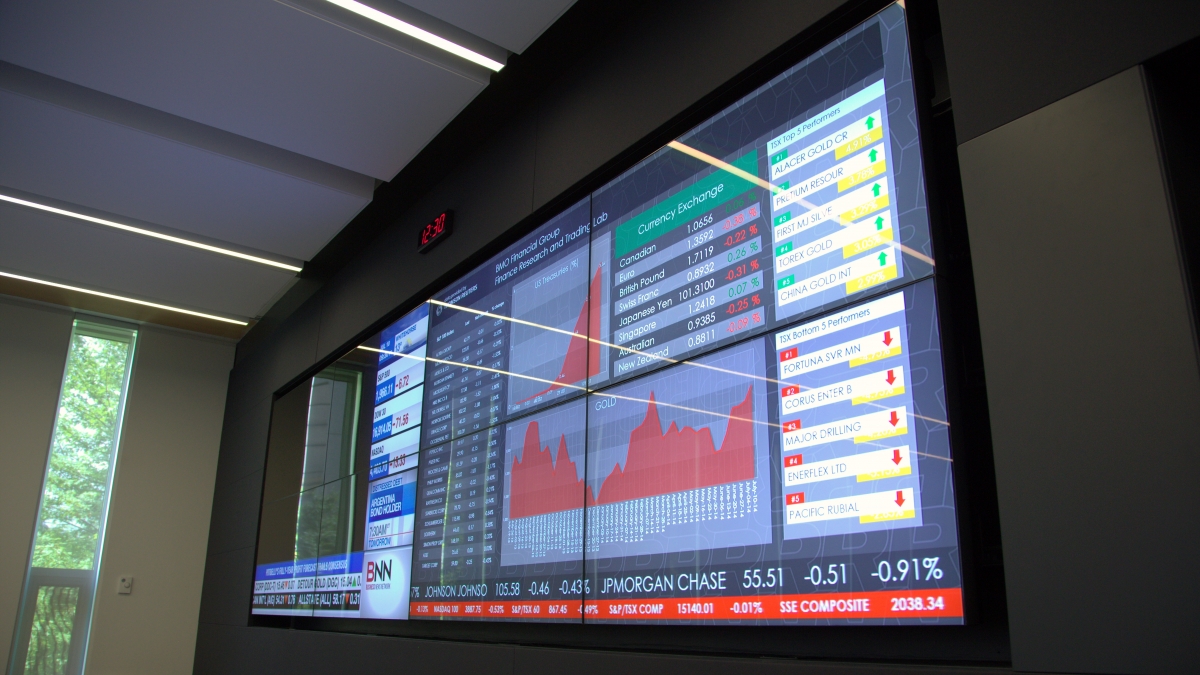Smart Students Demand Smart Tech – Higher Ed Institutions Need To Step Up
By Jessica Turnblom
Marketing Coordinator
JUNE 16, 2017
Millennials are embracing the increasingly digital world. Imagine an institution that brings together thousands of these millennials everyday. This place is where they spend the majority of their time for four to eight years, and spend thousands of dollars to do so. What are their expectations for such a place? Digital communication. As a student myself, currently attending a well known Canadian University, I have first hand experience with the digital communication tools available on campuses. Higher education institutions are using basic digital signage to share important information in order to improve the campus experience for students, employees, and visitors. While this is a great start, it is only scratching the surface of what digital communication tools can do for this community. With the majority of students between the ages of 18-25, they have grown up in an era of tech, making it an expectation rather than a bonus. Highlighted below are a few of the many ways university and colleges can implement digital communications across their campuses.
Timely Transportation
Students are busy; juggling school, extracurricular activities, a job, social life, all while practicing the current trend of healthy active living and fitting in a weekly Netflix binge. They expect information to be where they need it, when they need it. Students are techy; they are aware of the digital tools available to communicate. Therefore, students become quite frustrated when these tools are not available, forcing them to go out of their way to find the information for themselves. For example, on my campus, the majority of students commute to school everyday by bus. Why don’t we have a mobile app with real-time updates on bus routes? Students are frustrated with this everyday; the bus never showed, it was 20 minutes late, it was full when it reached my stop, did you know buses only run every hour on holidays – I was waiting 40 minutes! Mobile apps are everywhere, which is why students find it so frustrating when they don’t have one for a crucial service they use everyday. With the right software, it’s easy to whip up a real-time mobile app in minutes.
Simplifying the Study Spot Struggle
Exam season or not, students often spend 10-30 minutes walking through the floors of the school library looking for a seat. Seats are definitely available, but students often become so frustrated trying to find a seat they give up and head off to find somewhere else to study. Many students won’t even consider going to the library – they simply don’t want to deal with the headache and struggle of wandering around with a heavy bag of textbooks just to find a spot to study. This reflects poorly on the university, as an available library to study is one of the most basic expectations from a post secondary institution. An easy fix to this could be to implement real-time digital signage and/or a mobile app, showing which seats, cubicles, or group study rooms are available. The current method of booking group study rooms at many schools consists of booking online when the portal opens at midnight. The first problem with this is students need to be up and available at exactly midnight if they even want a chance at getting a room. Secondly, most of these rooms are booked as a precaution if students can’t find a better spot in the library when they arrive, meaning most of the rooms sit booked yet unused. IOT sensors have become highly affordable in recent years, making it a realistic and easy solution to a problem such as this. IOT sensors installed in each study room or cubicle can easily communicate to a digital screen or mobile app whether that space is occupied or available. This is similar to how many new parking garages are notifying people of where and what spots are available. Enabling students with real-time data such as this would significantly improve the student experience.
Taking Safety into the 21st Century
With thousands of students living on campus, and tens of thousands of students visiting campus each day, safety is a primary concern for higher education institutions. The current method of emergency notification is the well known siren. While an effective method for notifying people of an emergency, it does not allow the recipient to make the most informed decision about what to do. This poses many problems. An individual may be deaf, in which case they will not be aware of the emergency. Or, when making the decision to use the closest exit in a fire, an individual could be heading straight towards the fire, wasting precious time needed to safely escape. Through digital communication tools such as digital signage or mobile apps, large groups of people can be instantly informed of what type of emergency is occurring and how to safely deal with the situation. Not only can it provide information to people at risk, but bi-directional abilities allow information to be relayed back. For example, people can inform emergency personnel which part of the building they are in, if they are safe, trapped, or even received the message.
Another example could be aiding in safety communications when students walk alone at night, or if a crime is witnessed. The current safety method consists of a number of safety poles placed around campus. While a great invention, it is no help to students that are in danger nowhere near the pole. If students are targeted, they will obviously not be targeted within sight of an emergency pole. With a bi-directional safety app, students could easily alert authorities with a click of a button, anytime, any place. They can also alert authorities of the type of incident that is occurring, allowing safety personnel to take appropriate action without wasting any time. Safety is a liability to any post-secondary institution. Digital communication gives you the ability to reduce risk and increase the safety of students, faculty, and visitors.
While higher education institutions are on the right track, they are not meeting the expectations of their high paying customers – students. Universities and Colleges are consistently making campus improvements in order to attract top students, and digital communications should not be forgotten. In a time when consumers are already fully immersed in technology, and institutions are just beginning to embrace digital solutions, being an early adopter is where you want to be positioned. Digital communication tools allow campuses to not only gain competitive advantage but also differentiate themselves against competing institutions by providing the technology students now expect.




